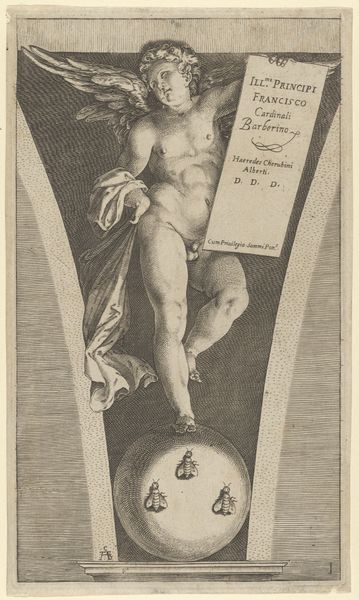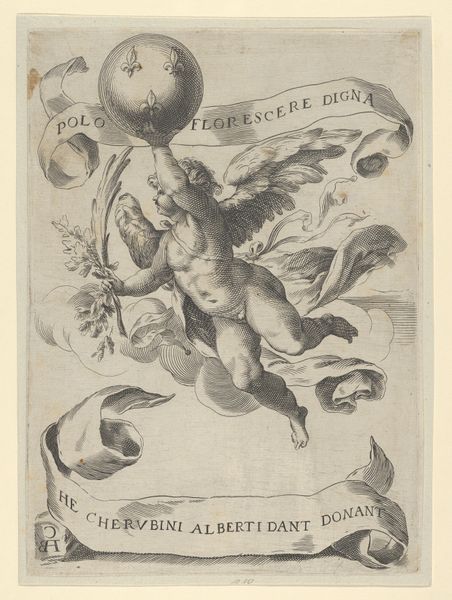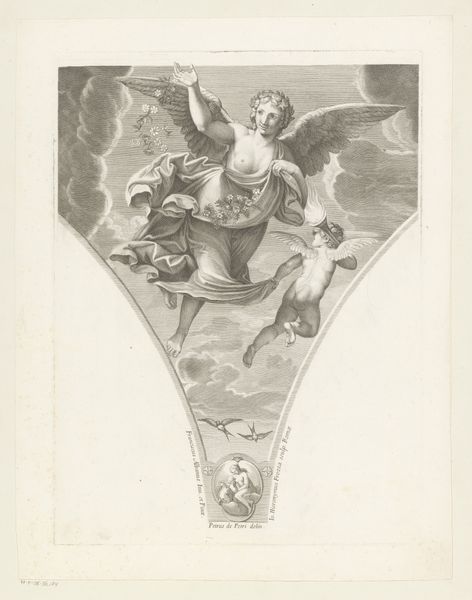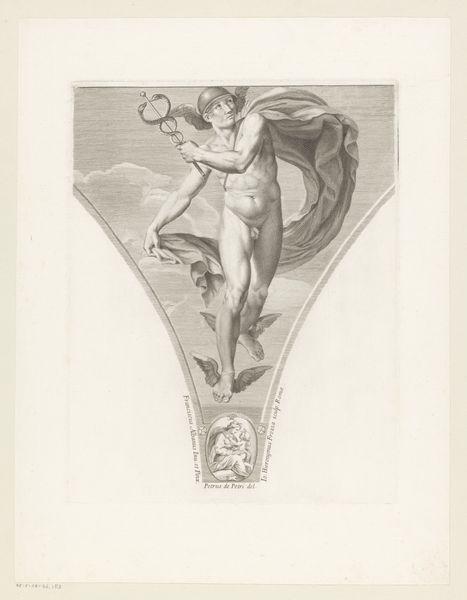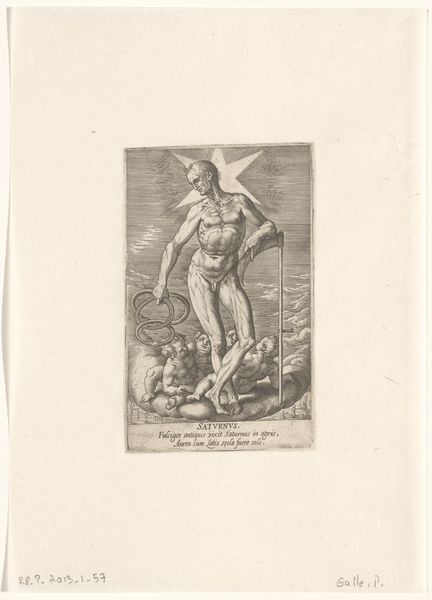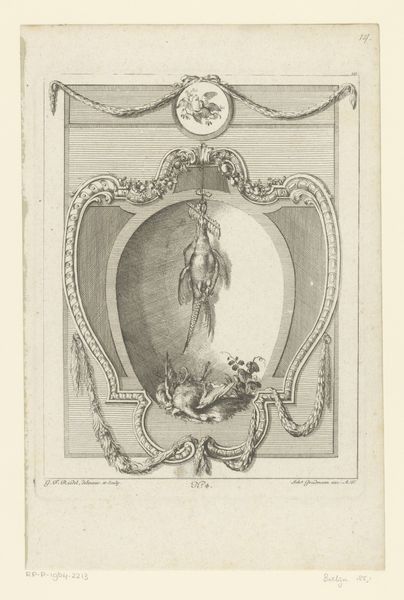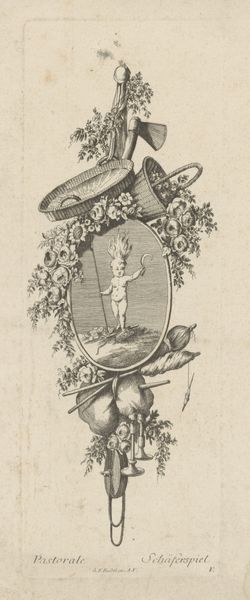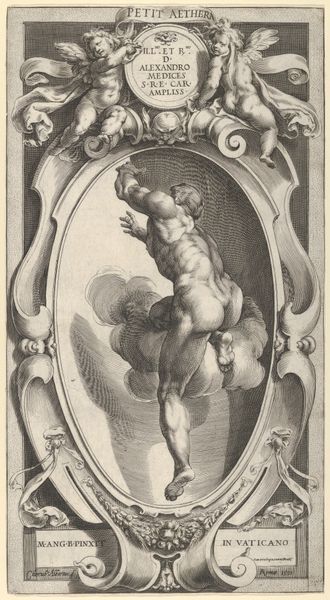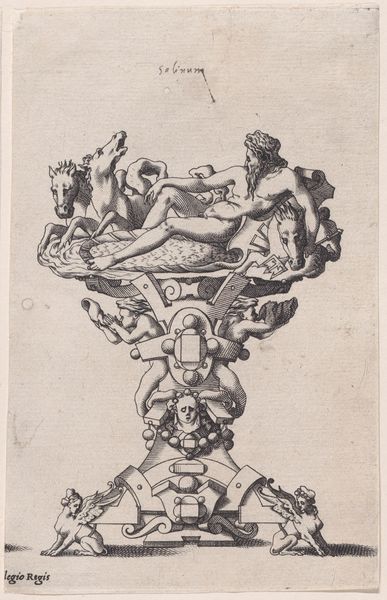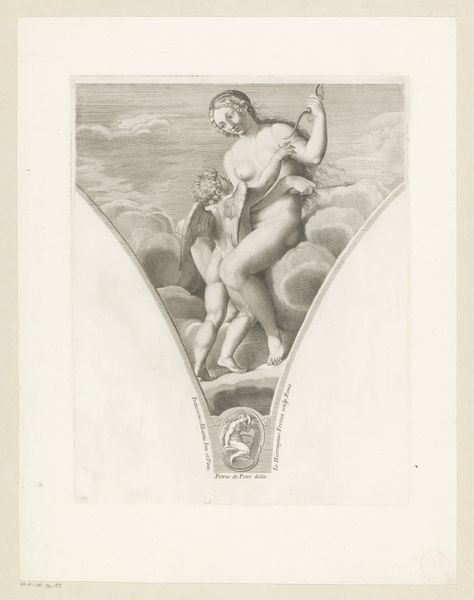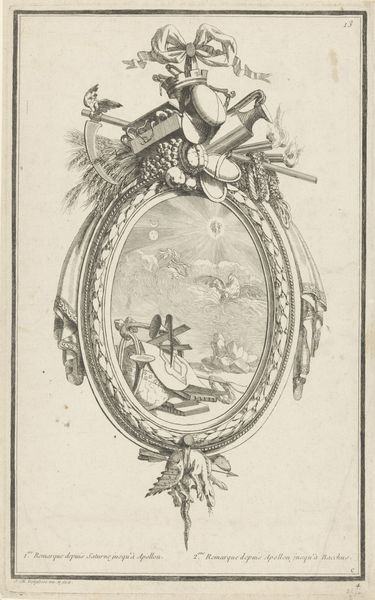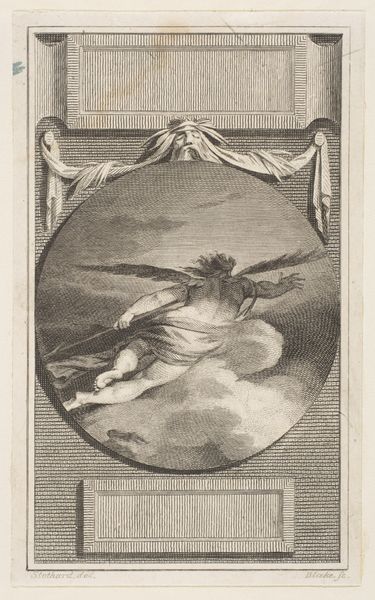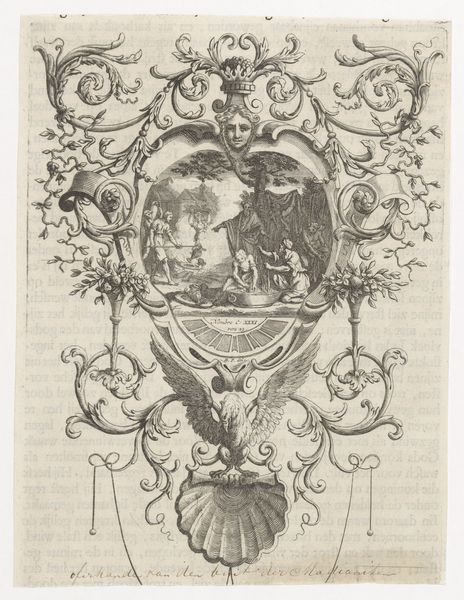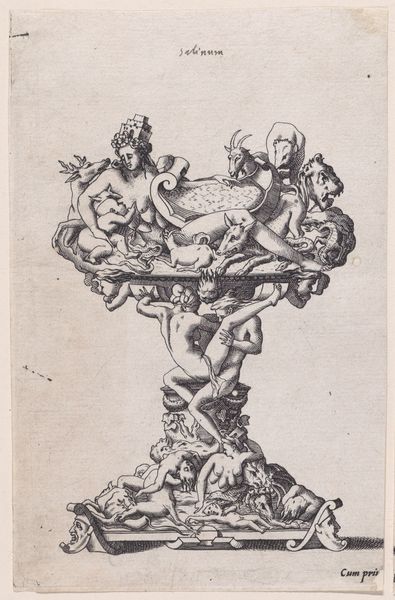
Winged putto holding a dedicatory plaque standing on an orb in an architectural detail 1680
0:00
0:00
drawing, print, engraving
#
drawing
#
allegory
#
baroque
# print
#
figuration
#
engraving
Dimensions: Sheet: 9 1/16 × 5 13/16 in. (23 × 14.8 cm)
Copyright: Public Domain
This print was made by Alexander Mair around the turn of the 17th century. It's an engraving, meaning that the image you see was incised into a metal plate, likely copper, with a tool called a burin. Ink would have been applied to the plate, then wiped away, remaining only in the incised lines. The plate was then pressed onto a sheet of paper, transferring the image. Look closely and you’ll see the artist's skilled hand in creating fine lines and textures. Notice how Mair uses hatching and cross-hatching to build up areas of shadow and volume, giving the figure of the putto a sense of depth and realism. The architecture in the background is a testament to the engraver's precision and technical skill. Engraving was a painstaking process, requiring both artistic vision and technical expertise. Prints like these were not just art objects, but also a means of disseminating information and ideas in early modern Europe. Appreciating the labor involved reminds us of the rich social context in which these images were created and circulated.
Comments
No comments
Be the first to comment and join the conversation on the ultimate creative platform.
